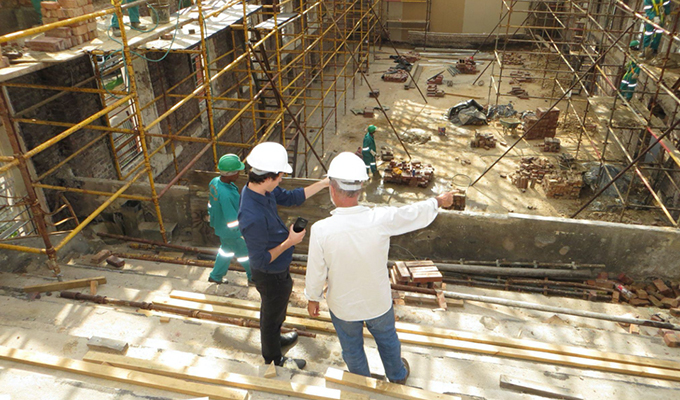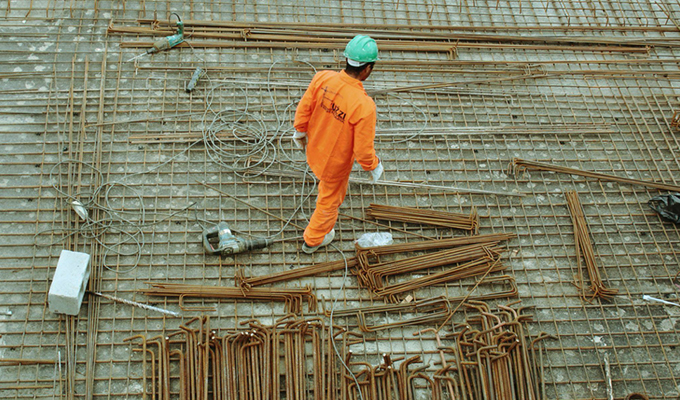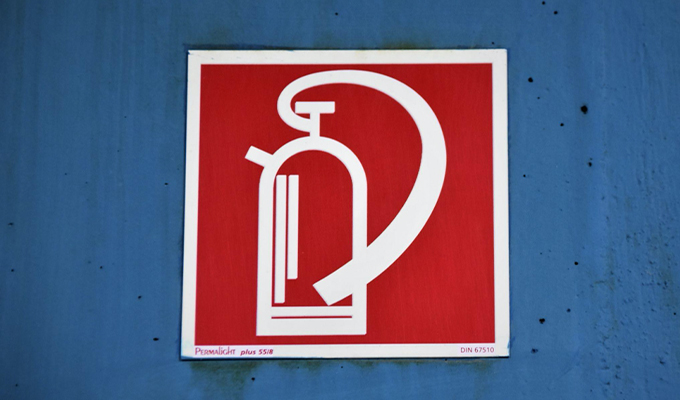There are many reasons why regular safety inspections are an important part of the construction process. Inspections can protect the health and happiness of your workers, guarantee the quality of the build, and, ultimately, be a deciding factor in whether or not the project is profitable, as skimping on safety concerns early in the process will usually come back to haunt the project in terms of dollars and cents after it is too late.
Therefore, whether you are pouring a new sidewalk in a subdivision, installing a series of pre-engineered metal buildings for a storage complex, or designing a commercial shopping center, the following pieces of advice can prepare you for how to effectively inspect a worksite for hazards and safety issues.
Look for Necessary Personal Protective Equipment (PPE)

No matter how wonderful the project turns out, it will be irrevocably marred if a worker sustains a life-altering injury. As such, worker protection is the number one concern of any worksite. When performing an inspection, make sure all workers and contractors are utilizing the following items:
- Hard hats
- Steel-toe boots
- Gloves
- Work pants and sleeved shirts
- Masks and safety glasses
- Hearing protection
- High-visibility vests
Be sure to have a bank of PPE that is easily accessible in the event that a worker shows up improperly prepared. While this involves a cost, the cost is minuscule compared to receiving an OSHA violation or lawsuit.
Identify Any Potential Fire Hazards
Fire is a very real threat at any worksite. Exposed timber and errant packaging are capable of catching flame in the presence of careless smoking, faulty electrical wiring, or sparks flying from overheating power tools.
As a result, it is critical that any potential fire hazards are detected during the inspection and immediately mitigated. Among the items that project managers should take to prevent a fire include:
- Having flammable or combustible liquids stored in a safe and secure area
- Immediately removing any flammable waste material from the site
- Having fire extinguishers or hydrants readily available. When building indoors, make sure that the passive fire protection system, such as smoke baffles and fire curtains, are properly deployed
- Implementing designated smoking areas
- Check that all electrical wiring and temporary heating devices are in good working order
Be Diligent with Progress and Quality Inspections

After a site has broken ground, a progress inspection is used to ensure that the build is compatible with project requirements and is progressing in a satisfactory manner. It usually involves professionals from multiple areas of the project, such as a general contractor, project manager, and/or architect, and is meant to eliminate cutting corners during the build.
A quality inspection, while similar to a progress inspection, has some distinct nuances. It essentially checks to see if the quality standards laid out in the project documents have been met. This may include both the quality of work and materials. For example, before any below-grade insulation is laid, a quality inspection may be conducted on the foundation to ensure that there are no threats of erosion or that the foundational materials are of the exact quality outlined in the build plans.
When feedback is received during these inspections, it is critical that project managers implement the feedback to improve the project. Failing to follow recommendations outlined during a progress or quality inspection creates a major safety risk, as workers can be imperiled by building on sites that are below standard.
Take Steps to Improve Air Quality
Construction sites are known to experience issues with poor ventilation, toxins, and excess dust in the air. This can lead to late-onset health issues for workers, resulting in expensive litigation down the road that can be drawn out for years.
While wearing a mask is a great place to start, it is often not enough. As a result, be sure that the site is equipped with portable air scrubbers to take in the low-quality air, filter out any potential toxins, and return clean air to the work environment. Listen to Concerns of Workers
Construction sites are known to experience issues with poor ventilation, toxins, and excess dust in the air. This can lead to late-onset health issues for workers, resulting in expensive litigation down the road that can be drawn out for years.
While wearing a mask is a great place to start, it is often not enough. As a result, be sure that the site is equipped with portable air scrubbers to take in the low-quality air, filter out any potential toxins, and return clean air to the work environment.
Listen to Concerns of Workers

Listening is just as important as looking when it comes to effective safety inspections on the worksite. In many cases, your workers will be the people most qualified to make judgments on the safety of an area. While you will only be in observance of the worksite periodically, your workers will be on the frontline hour after hour, day after day.
Therefore, it is essential to take the concerns of your workers very seriously. Do not just assume that they are complaining and dismiss seemingly minor issues that may have escaped your attention during an inspection. Any concern presented by a worker is definitely worth investigating and may help you identify an issue that would have otherwise gone unnoticed.
The Most Important Considerations for Worksite Safety and Hazard Inspections
Ensuring worksite safety through regular inspections is critical for protecting workers, guaranteeing build quality, and closing a profitable project. Checking for the proper PPE, identifying fire hazards, being diligent with progress and quality input, improving air quality, and listening to the concerns of workers are a few of the most important steps project managers can take to effectively inspect a worksite for hazards and safety issues.
about the author
Max Shafer is a contributor to the Innovative Building Materials blog. He is a content writer for the construction and home improvement industries with an interest in landscaping, outdoor remodeling, and interior design. Max is focused on educating homeowners, contractors, and architects on innovative materials and methods of construction that increase property value, improve sustainability, and create a warm and welcoming ambiance.


